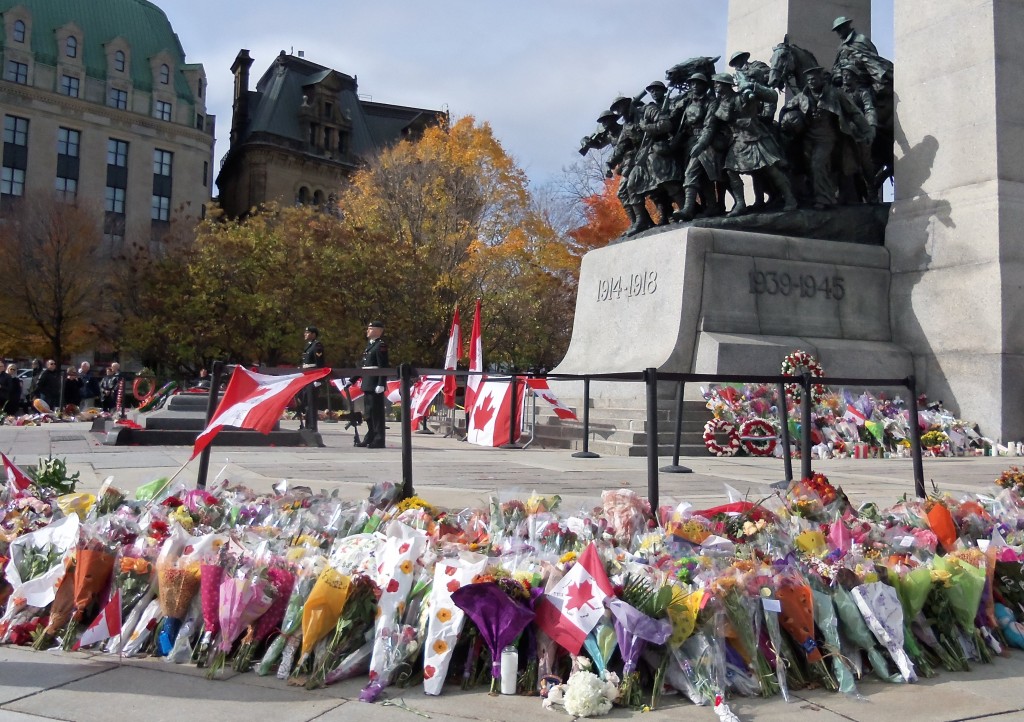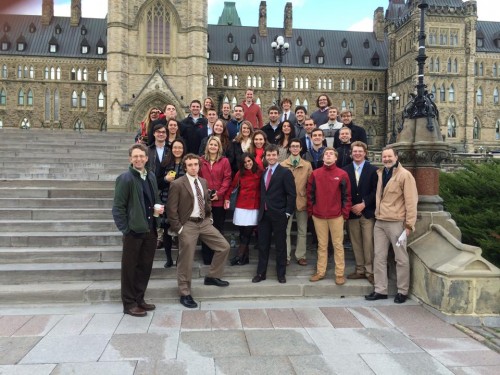When does a memorial become an important piece of history itself? In the case of Canada’s National War Memorial in Ottawa, the transformation occurred this past October when a masked gunman obsessed with radical Islam shot and killed in cold blood one of the memorial’s honor guards, Corporal Nathan Cirillo, before storming into Parliament up the street.
Professor Jeffrey Ayres of Saint Michael’s College and I were due to travel to Ottawa just one day after these events took place. With Ottawa still in a state of alert, we were forced to postpone the trip. Rescheduling until the following week meant that a number of the fifty students signed up for the trip could no longer attend. We proceeded instead with a smaller group, and those students got an all-too-real taste of a city that had been just days before in a state of siege.

The War Memorial was erected in the 1930s to commemorate the Canadian dead of World War One, but has since been rededicated to Canadian war dead generally. A Tomb of the Unknown Soldier, which Cirillo and his companion were guarding, was added in 2000. The monument itself is striking, with bronzed soldiers marching through a soaring granite arch.
Flowers, flags, and messages of condolence bedecked the War Memorial when we visited. UVM and SMC students explored the site in respectful silence. Other visitors by the dozens paid their respects including, when we were present, U.S. Government dignitaries who were accompanied by a Marine Corps guard. Security was especially tight at the Parliament. Students walked the halls where the gunman and security officials exchanged gunfire, and they touched the bullet holes in the walls.
Each of the annual student trips I have taken to Ottawa since my arrival at UVM in 1997 has been made special for its own reason. This past fall’s trip was touched by the sadness and solemnity of an act of violence in an otherwise basically peaceful land.

